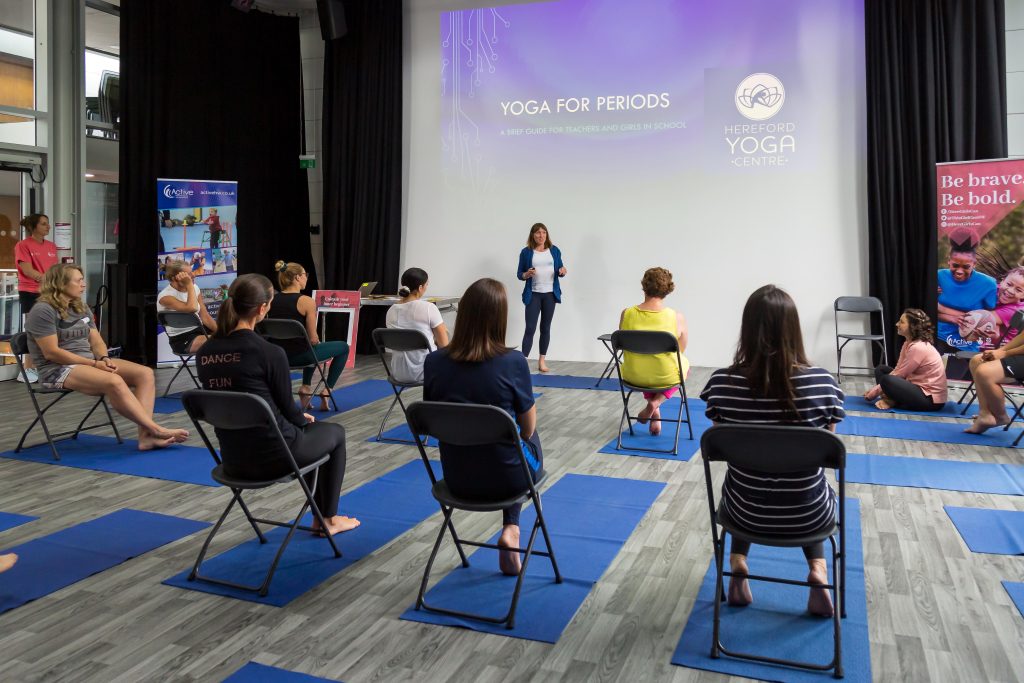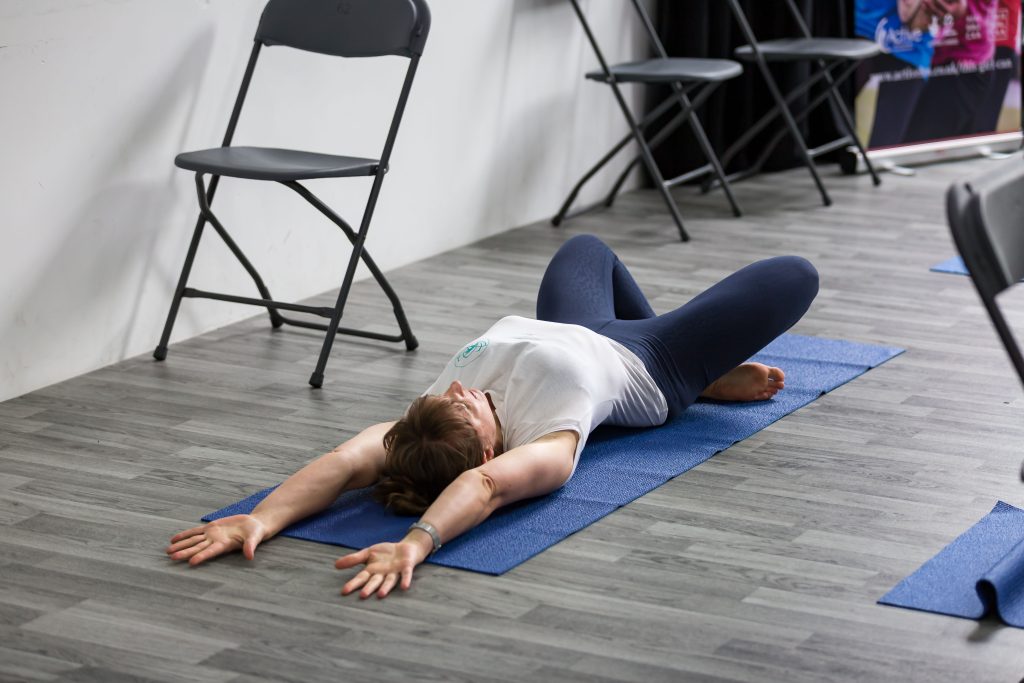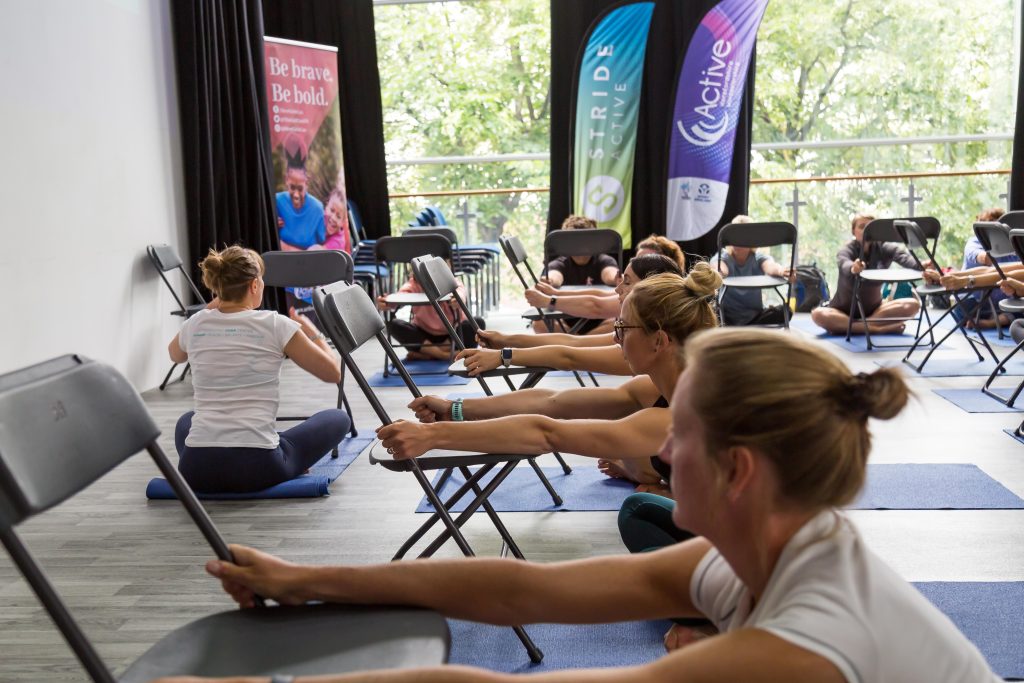
I HATED PE at school. I really loathed it. It was a routine humiliation of nylon knickers and enforced communal showers, of feeling clumsy and inadequate next to the ‘PE girls’, who were usually also the ‘popular girls’; powerful, enviable, desirable. PE, for me, meant shivering on a vast field, waiting for the inevitable hockey stick in the shins or ball in the face. I was usually picked for teams second to last. It was an all-round painful experience and every chance I could, I would bunk off.
Fast-forward 30 years and here I am, delivering a ‘yoga for periods’ lecture-demo at an education conference at the University of Worcester. After the introductions, I realise that the audience is entirely made up of ‘PE girls’, now PE professionals. Granted, there are some guys present, but all of these people are just so into sport! I have nothing against sport. After an unfortunate start I have come to really appreciate its importance and its beauty. But it has nothing to do with my experience- so how did I get here? It’s so ironic that I nearly burst out laughing, then glance around awkwardly, waiting for that ball to the face. And collect myself. These people are amazingly committed. They care deeply about their tribes (their sports, and their teams, their schools), and also about education, about helping young people stay active and healthy, and about closing the gender gap. This is where our interests intersect.
 Since the inception of Hereford Yoga CIC (Community Interest Company) in 2014, I have worked closely with local statutory and voluntary services whose interest is in increasing activity, especially in girls, who are over 50% more likely to become inactive than boys of the same age. Girls, only 2% of who describe themselves as ‘strong’ as opposed to 49% of boys. This has usually meant collaborating with PE departments.
Since the inception of Hereford Yoga CIC (Community Interest Company) in 2014, I have worked closely with local statutory and voluntary services whose interest is in increasing activity, especially in girls, who are over 50% more likely to become inactive than boys of the same age. Girls, only 2% of who describe themselves as ‘strong’ as opposed to 49% of boys. This has usually meant collaborating with PE departments.
I practise yoga as an art and a philosophy, so bringing yoga to schools via PE departments has always felt like a strange fit. It’s just been the ‘way in’ due to the widely accepted misconception of yoga as a purely physical activity. And yet, how wonderful that these sporty teachers are identifying the needs of those, like me all those decades ago, for whom traditional PE activities just aren’t resonating. Who care about girls’ experience of the menstrual cycle enough to take a day out of their busy schedules to learn some approaches to opening the conversations and expanding the offers at their schools.
Iyengar yoga, thanks to the lifetime’s work of Geeta S Iyengar and her colleagues, has a wealth of knowledge to offer around staying active throughout the whole menstrual cycle. The idea that a meaningful asana (postural) practice can be adapted to work with (not against), not just menstruation, but all phases of the menstrual cycle and indeed all phases of a woman’s life, was radical when Ms. Iyengar started her research into it. Postural yoga was having its hey-day in the 1970s and 80s, spreading worldwide via students of the guru Krishnamacharya, with each of these (almost exclusively male) students developing his own style and methodology. The physicality was strong and dynamic, evolving as it did out of the Mysore tradition that was designed for active boys and young men. BKS Iyengar’s dedication to making the practice of yoga accessible to all bodies no doubt inspired his daughter Geeta’s mission of bringing the female experience to the forefront of contemporary yoga practices.
 2 out of 3 girls are still opting out of PE during their period. But the Iyengars’ method does not stipulate that a girl or woman should stop practising when she is menstruating. On the contrary, the poses and sequences are adapted according to the individual’s needs, with special care taken for rest and release in the abdomen, lower back and head, and towards promoting hormonal balance. Props are used to engender a feeling of being supported. As someone who has suffered chronic menstrual problems, I advocate this as one of the greatest gifts arising from the phenomenon that is transnational postural yoga. I believe that girls should be taught these techniques in schools. It will help them to feel listened to and cared for; to feel equipped and capable; to acknowledge and respect the inherent strength of their own womanhood, rather than perceiving it as a weakness.
2 out of 3 girls are still opting out of PE during their period. But the Iyengars’ method does not stipulate that a girl or woman should stop practising when she is menstruating. On the contrary, the poses and sequences are adapted according to the individual’s needs, with special care taken for rest and release in the abdomen, lower back and head, and towards promoting hormonal balance. Props are used to engender a feeling of being supported. As someone who has suffered chronic menstrual problems, I advocate this as one of the greatest gifts arising from the phenomenon that is transnational postural yoga. I believe that girls should be taught these techniques in schools. It will help them to feel listened to and cared for; to feel equipped and capable; to acknowledge and respect the inherent strength of their own womanhood, rather than perceiving it as a weakness.
We learn through the body and the senses; imagine the impact throughout the rest of the education system, and on the rest of their lives, if in PE lessons kids were routinely given opportunities to improve posture, increase confidence and develop an understanding of body-mind integration. I learned last week that, unlike my experience in the 1990s, this is what many departments are beginning to implement. So I thank the organisers for the invites to the Worcester and Hereford conferences. I salute the teachers who are serious about shifting the culture of PE from primarily or exclusively sports education to a meaningfully inclusive and holistic physical education. And I know that yoga has an important part to play in enabling that evolution.
Images: Gabriella http://capturedbygabi.com/
https://strideactive.org/
https://www.activehw.co.uk/
https://en.wikipedia.org/wiki/Geeta_Iyengar
